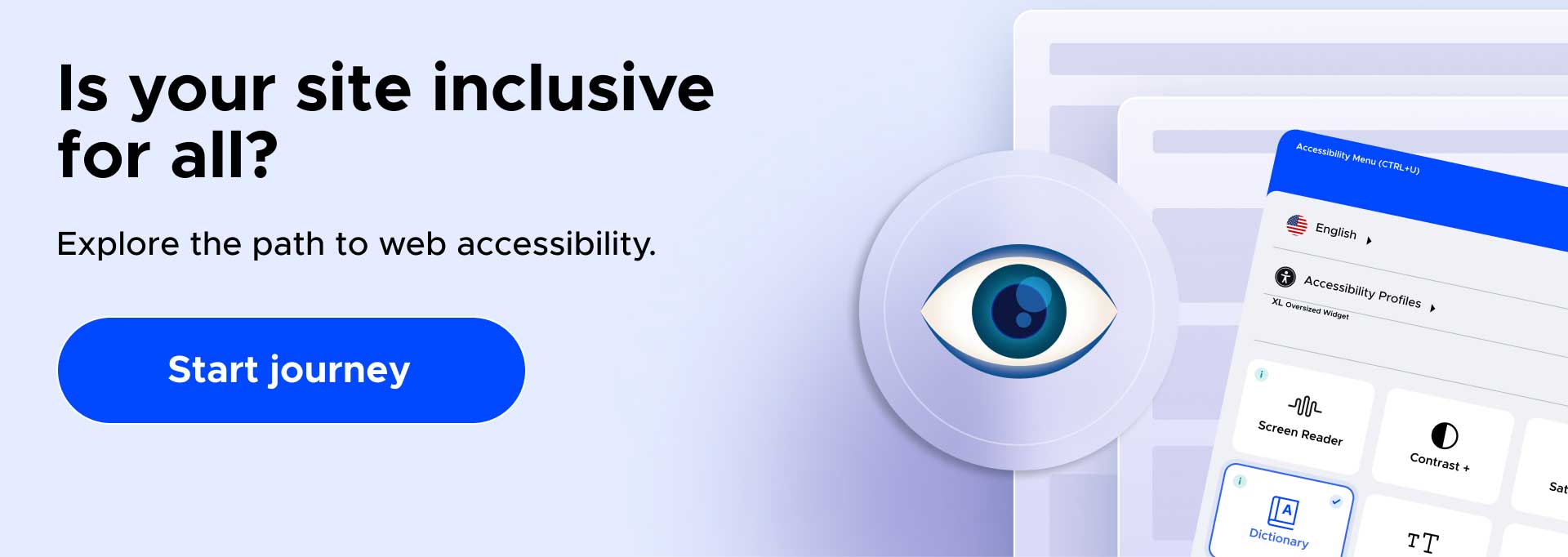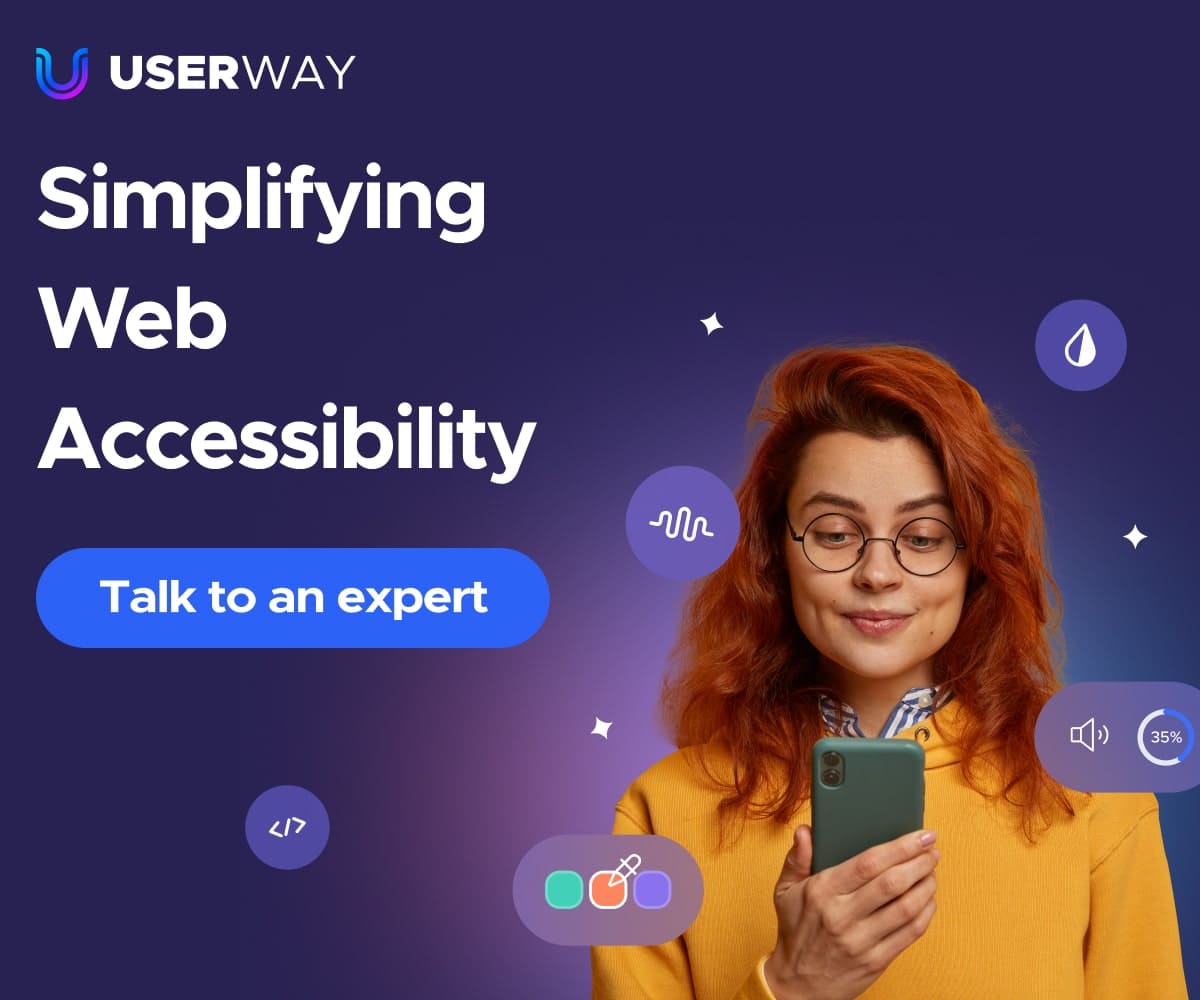Did you know a staggering one billion people worldwide have disabilities, including 53 million in the United States? They also comprise the largest minority group in the world. So, providing accessibility for all people, including those with disabilities, should be a top priority for any organization. And according to the ADA, it’s also a legal requirement. But fewer people are familiar with the definition of situational disabilities, even though we all experience them from time to time.
This blog explores situational disabilities and their impact on everyone, which can hopefully increase awareness and empathy for all disabilities. You’ll also learn how these temporary conditions relate to assistive tech tools that benefit the broader population and promote better business solutions.
First, let’s learn how none of us are immune to situational disabilities. Then, we’ll dive deeper into how assistive technology makes life easier for everybody.
Everyone Faces Situational Disabilities
If you think you don’t have disabilities, picture this: you’re outside on a sunny day, which makes it hard to see your mobile phone. So you use one of your hands to shade the phone or turn up the contrast for a clearer view. According to conventional wisdom, you don’t have a disability. Instead, most people just see the contrast button as smart technology. Or, put another way, it’s the solution to a problem we all occasionally face.
You couldn’t see the screen, right? So, what’s the lesson? While you may not have a permanent condition, you do have a disability at that moment. The contrast tool helps those with vision-related disabilities read and understand digital content. But it also helps everyone else do the same thing when necessary, especially in a situational environment like being outdoors on a bright sunny day.
Let’s look at more situational disability examples below.
Situational Disabilities We Can All Relate to
Situational impairments are everywhere once you know how to spot them, as you’ll see from the following examples. Each example includes an assistive tech solution—designed for people with disabilities—that also supports situational accessibility and makes the digital experience easier for all of us.
Scenario 1: You accidentally break your arm on an ice skating adventure.
Ice skating can be challenging. Even the pros fall, break arms, and wear unsightly casts, making it difficult or impossible to use their fingers until everything heals.
If you want to use your computer, you’ll quickly learn that the mouse and trackpad require fine motor skills you no longer have. While it’s easy to say you could use your other hand, that’s much harder than you think. Give it a shot right now. Try to open a new tab and an email using your other hand. It gets annoying fast.
Assistive Technology Solution: Keyboard navigation such as tab, space, and arrow keys enable computer users to access content when a touchpad, touch screen, or mouse isn’t available.
Scenario 2: You’re in a crowded restaurant and miss an important phone call because you can’t hear it ring.
You might be waiting to hear back about a job or hoping to hear back from a friend. And you could miss the call if you’re in a noisy, crowded place and can’t have a staring contest with your phone. This situational impairment makes things more complicated than usual and frustrating for people of all abilities.
Assistive Technology Solution: Mobile device vibration and LED flashing alerts are excellent solutions when a disability, situation, or environment impairs hearing.Scenario 3: You get an ear infection and can’t hear well out of either ear for a week.
Ear infections aren’t just for kids. While your ears are healing, your hearing might suffer, causing unexpected complications. For example, let’s say your boss sends you a TED Talk and asks you to watch it before your 2:00 PM meeting. Do you really want to tell her you couldn’t hear the video because of an ear infection?
Assistive Technology Solution: Subtitles/captions and transcripts help support all video content and virtual meetings when hearing is impaired.
Scenario 4: Your doctor dilates your eyes during a routine exam, and you’re highly light-sensitive.
You leave the eye doctor’s exam wearing those giant plastic glasses they give you, and every bit of light hurts. You squint, groan, and know you’ll live like a vampire for the rest of the day until your eyes return to normal. But still, the temptation to check your phone overcomes you, and now you’re staring at the bright screen, trying to adjust.
Assistive Technology Solution: Contrast modifications and display brightness options make it easier for everyone to see and use their digital device when a disability, environment, or situation calls for it.
Scenario 5: It’s cold out, and you’re shivering too much to remove your gloves and use the touchscreen on your phone.
In this case, you can’t use technology as you typically would. For example, you need capacitive-tipped gloves to register on your smartphone to use your touch keypad. But if you can’t use your touchscreen, there must be another way to interact with the device.
Assistive Technology Solution: Verbal commands help people use digital devices when they can’t use the touchscreen option.
These real-life scenarios should make situational disabilities easier to understand and identify. But they also fall into different categories that directly impact businesses, as you’ll learn in the next section.
Temporary Partial Disability Vs. Temporary Total Disability
The difference between a temporary partial disability and a temporary total disability relates directly to the workplace. Situational disabilities can fall into either category. So, whether you own a business or work for one, you should understand these definitions.
Temporary Partial Disability
This workers-comp disability level applies to injured employees temporarily excluded from doing particular responsibilities. These individuals can still perform a smaller workload—and two earning levels determine their compensation because their disability isn’t permanent.
Examples may include broken limbs, strains, and short-term limitations due to surgery or medical treatment.
Temporary Total Disability
These disabilities are more severe and completely prevent people from working for a short period until they recover.
Examples may include a physical accident that inhibits the use of the limbs and specific brain-related injuries.Naturally, companies also have to remain focused on profitability to succeed. Read on to see why digital accessibility is an essential business strategy.
Better Accessibility = Better Business
Digitally accommodating people with disabilities (permanent or situational) will only help your business. This substantial demographic wants and needs your products. But they also have different viewpoints and needs than people without disabilities. So, why not simply accommodate everyone in any way you can? After all, excluding people with disabilities from your digital storefront hurts your overall sales potential.
That’s because an ADA-compliant website can substantially elevate your revenue, particularly if you have an E-commerce storefront. E-commerce sales in the U.S. reached roughly $5.2 trillion in 20218 and are projected at $8.1 trillion by 2026. As a result, companies that integrate accessibility and embrace a wider audience will likely reap the most significant rewards.
Consumers now expect organizations to promote inclusivity, so embracing accessibility is also an opportunity to elevate your company’s image. By leveraging accessibility through your marketing efforts, you can prove your commitment to a more equitable web experience for everyone. This can lead to better outreach through PR, a deeper personal connection with consumers, and stronger brand loyalty. And that’s a pretty solid formula for sustained success.
So, where do we go from here?
Looking Ahead: How We Can Help Our Future Selves
If you don’t have a disability now, just wait. Eventually, we all have diminished eyesight, hearing, mobility, cognitive abilities, memory, etc. But it’s not just age that shapes a certain or uncertain future. For instance, you may unexpectedly face a situational disability on any given day. And now you know how assistive technology can help you when this happens.
From a business and personal standpoint, supporting digital accessibility can simultaneously support altruism and self-preservation. As such, future codified standards may help with cognitive disabilities. For example, end users could theoretically click a “simplify” button showing only the most critical content on a webpage. That’s accessible technology we can all get behind for the future good of everyone.
Summary: Let’s Do Better Together
The bottom line is helping people with disabilities, the world’s largest minority group, helps all of us. If we embrace a new way of thinking, maybe we can stop seeing assistive tech as a way to help people with disabilities and start seeing it as a solution that makes life easier and better for everyone.
Hopefully, a closer look at situational disabilities can help increase empathy, raise awareness, drive meaningful legislation, and make physical and digital accessibility something we expect. One thing is sure: there’s a golden opportunity for everyone to support the cause right now.
Are you looking to join the cause? Then, look only as far as UserWay’s AI technology.
UserWay: Digital Accessibility. Solved.
UserWay is on a mission to provide digital accessibility to everyone, regardless of their ability or background. Learn how UserWay’s AI technology can help make your website and digital assets inclusive of all people, including those with disabilities.
Start with a free trial or demo, or simply reach out to a UserWay representative.
Common FAQs
What are Situational Disabilities?
Situational disabilities are temporary and based on a specific set of circumstances. Examples include broken limbs, environments that inhibit the senses (e.g., a loud music venue), and surgery recovery.
What’s the Difference Between Temporary Disability and Permanent Disability?
- Temporary Disability refers to illnesses or injuries that temporarily prevent people from partaking in everyday things like walking, using a computer, or carrying groceries without help.
- Permanent/Long-Term Disability refers to conditions that may permanently impair normal activities like seeking employment. They can be hereditary (e.g., disease-related) or caused by accidental circumstances like a car crash.
Why are Situational Disabilities Often Overlooked?
Most people aren’t aware they even exist until they see them described (as we do in this blog) or face one themselves. For example, most people don’t know a broken limb is a situational disability because they aren’t familiar with the category itself. Hopefully, articles like this will increase awareness of situational disabilities and all other disabilities.

